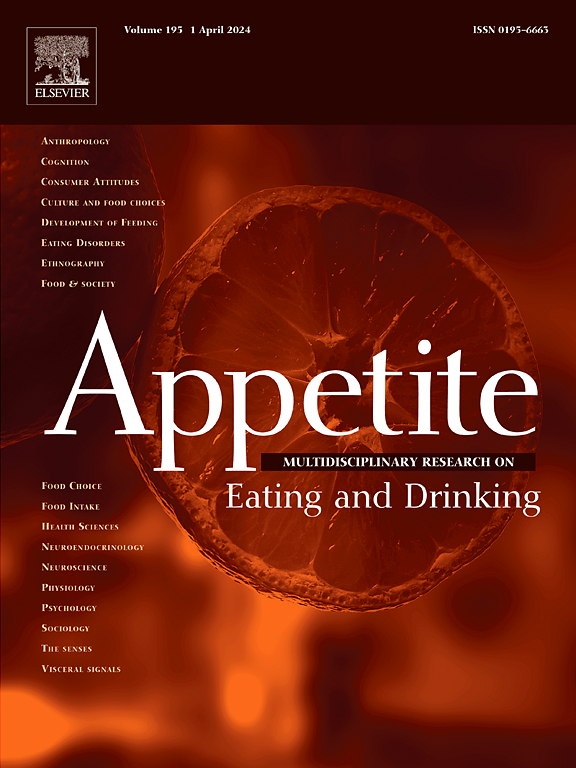"数字太多,我只想喝一杯":宣传酒类产品能量含量的挑战。
IF 4.6
2区 医学
Q1 BEHAVIORAL SCIENCES
引用次数: 0
摘要
各国政府都在考虑在酒类产品上贴上能量标签,作为预防肥胖政策的一项内容。然而,人们对向消费者传达能量信息的最有效方式知之甚少。本研究旨在探讨消费者对不同能量信息提供形式的反应,以帮助制定有效的能量标签。研究人员对每月至少饮酒两次的澳大利亚成年人进行了九次焦点小组讨论(人数为 83 人)。参与者接触了纯能量信息标签和显示完整营养信息面板的标签。采用专题分析方法确定了关键问题。虽然很少有参与者对在酒类产品上强制显示能量值表示热衷,但他们普遍支持提供这种信息,以帮助那些可以从中受益的饮酒者。当参与者试图从所提供的信息中提炼意义时,特别是当这些信息是以饮用量和标准饮品的形式来表达时,就会出现明显的混淆。由于列出的多种营养物质数值为零或很低,全营养成分表在营造健康光环方面尤其成问题。与糖含量有关的信息尤其如此。总之,公众似乎对酒精饮料中膳食能量的概念以及用于量化膳食能量的各种术语理解不足,这可能会限制强制提供能量信息要求的效用,除非同时开展有效的社区教育。本文章由计算机程序翻译,如有差异,请以英文原文为准。
“There's just a lot of numbers and I just want to have a drink”: The challenge of communicating the energy content of alcohol products
Various governments are considering the implementation of energy labelling on alcohol products as one element of obesity prevention policies. However, little is known about the most effective ways to communicate energy information to consumers. The aim of the present study was to explore consumers’ reactions to different energy information provision formats to assist the development of effective energy labels. Nine focus groups (n = 83 participants) were conducted with Australian adults who reported drinking alcohol at least twice per month. Participants were exposed to an energy-only information label and labels displaying full nutrition information panels. A thematic analysis approach was used to identify key issues. While few participants were overtly enthusiastic about the mandatory display of energy values on alcohol products, there was general support for the provision of this information to assist those drinkers who could benefit from it. Substantial confusion was apparent as participants attempted to distil meaning from the provided information, particularly where it was expressed in terms of serving sizes and standard drinks. Full nutrition panels were particularly problematic in terms of creating a health halo due to the nil or low values for multiple nutrients listed. This was especially notable for information relating to sugar content. Overall, there appears to be inadequate public understanding of the concept of dietary energy in alcoholic beverages and the various terms used to quantify its presence, which is likely to limit the utility of mandatory energy information provision requirements unless they are accompanied by effective community education.
求助全文
通过发布文献求助,成功后即可免费获取论文全文。
去求助
来源期刊

Appetite
医学-行为科学
CiteScore
9.10
自引率
11.10%
发文量
566
审稿时长
13.4 weeks
期刊介绍:
Appetite is an international research journal specializing in cultural, social, psychological, sensory and physiological influences on the selection and intake of foods and drinks. It covers normal and disordered eating and drinking and welcomes studies of both human and non-human animal behaviour toward food. Appetite publishes research reports, reviews and commentaries. Thematic special issues appear regularly. From time to time the journal carries abstracts from professional meetings. Submissions to Appetite are expected to be based primarily on observations directly related to the selection and intake of foods and drinks; papers that are primarily focused on topics such as nutrition or obesity will not be considered unless they specifically make a novel scientific contribution to the understanding of appetite in line with the journal's aims and scope.
 求助内容:
求助内容: 应助结果提醒方式:
应助结果提醒方式:


